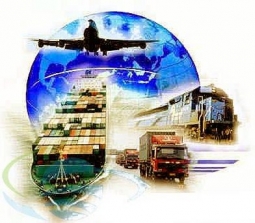
The transportation part is a general classification that incorporates businesses, for example, shipping, trucking, aircrafts, package conveyance and railways. Transportation organizations work in each economy, and division incomes are principally managed by monetary action. As per FactSet, worldwide transportation industry incomes came to $1.6 trillion in 2015. The information proposes that gross domestic product (GDP) is the biggest determinant of transportation income commitment, while income development patterns are affected by an assortment of elements including financial development, money changes and worldwide exchanging action.
Key Drivers
Gross domestic product is firmly identified with worldwide transportation incomes. Transportation administrations are a crucial part of created economies, so profitability and transportation movement have a tendency to develop and contract as an inseparable unit. Universal trade is another significant driver of transportation income identified with Gross domestic product, however particular from crude profitability figures. Household transportation exercises impact foreign trade statistics, and exchanged administrations frequently require negligible transportation, because of correspondence innovation. In any case, the transportation of merchandise and individuals regularly crosses national outskirts in the actual economy, affecting part incomes. Oil costs are likewise a noteworthy determinant of transportation movement, income and benefits, as low costs diminish transportation working costs, permitting organizations to pass reserve funds on to clients, and empowering higher volume.
Income Commitment by Geographic area
As indicated by FactSet, the Asia-Pacific district was the most astounding supporter to worldwide transportation income in 2015, with 39% of aggregate deals. The Americas took after at 32.9%, and Europe included 23.6%. Developed countries represented 71.5% of area deals, while emerging economies contributed 23.8%, leaving just a little sum for immature boondocks economies. These figures bolster the connection between's transportation income and Gross domestic product. The Asia-Pacific area has substantial nations, for example, China, India and Indonesia, and well off nations, for example, Japan, South Korea and Australia. The Americas have uncommonly extensive nations, for example, Brazil and Mexico, and well off countries, for example, Canada. The Americas likewise have the United States, which is both extensive and developed.

For individual nations, the United States was the biggest supporter to worldwide transportation incomes in 2015, at 25.7% of yearly deals. This figure was driven by the U.S. around the world high 2015 Gross domestic product of $18 trillion. In transportation income commitments, the United States was trailed by Japan at 15.9% and China at 12.2%. Japan and China had GDPs of $4.1 trillion and $11.4 trillion in 2015,respectively. The Unified Kingdom, Germany, France, South Korea and Canada finished the gathering of biggest supporters, with aggregate introduction running from 2.3 to 5.3%. These nations are in the main 11 worldwide donors by worldwide Gross domestic product. High-Gross domestic product nations eminently missing from the main eight of transportation income supporters incorporate India, Italy and Brazil.
Development by Nation
Of the biggest supporters to worldwide transportation incomes, the speediest year-over-year (YOY) income development was found in China at 5.6%, trailed by the Unified Kingdom at 4.9%. In spite of the fact that China's Gross domestic product development moderated in 2015, the nation still oversaw 6.8%, which was quick in respect to other substantial economies battling with troublesome conditions. The Unified Kingdom accomplished 2.5% Gross domestic product development, which was quick with respect to numerous other European economies. For this situation, the United Kingdom was supported by the reinforcing of the British pound in respect to numerous worldwide monetary forms amid the year. The United States experienced 2.9% transportation income development, French transportation deals grew 1.6% and South Korea deals grew 1.8%. Canada encountered a profound constriction of 9.2%, while Japan's and Germany's decays were more humble at 1.8% and 0.6%, sequentially.
As indicated by the United Nations Meeting on Exchange and Improvement, worldwide merchandise exchange declined 13% in 2015, while services exchange just fell 6%. Merchandise trade was hit particularly hard by tumbling vitality and commodity costs, which clarifies Canada's fast decrease in transportation incomes, since Canada's economy is intensely presented to crude material generation and exportation. Swapping scale variances additionally assumed a noteworthy part in exchange decays, with devaluation of monetary standards, for example, the euro, the Japanese yen and South Korean won making huge errors between nearby money named and dollar-designated exchange measurements.


